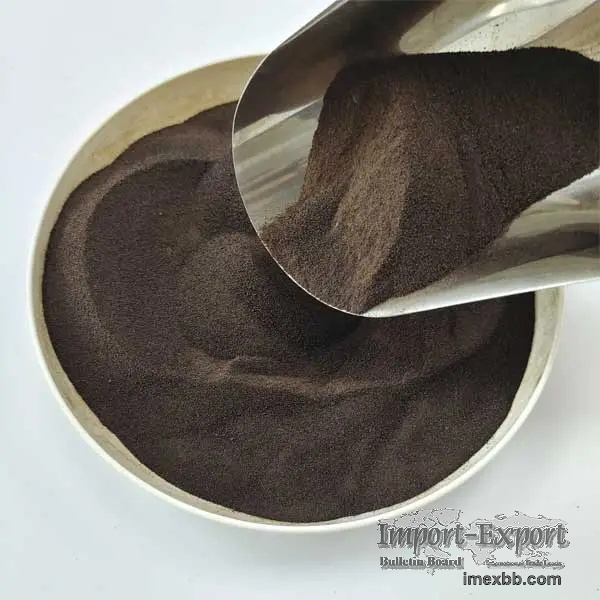 |
 |
Home > Offers to Sell > Business Services & Service Equipment > Cargo & Storage Services
| Contact: | jfchemtech |
|---|---|
| Company: | Shandong Jufu Chemical Technology Co., Ltd. |
| Bld.4-1001,No.2177,Tianchen Rd., Jinan,Shandong,China | |
| Shandong 250101 | |
| China | |
| Phone: | 053188987705 |
| E-Mail: | |
| Date/Time: | 1/3/24 3:37 GMT |
Dispersant
Dispersant is a chemical additive used to improve the dispersion or
distribution of solid particles or materials within a liquid medium. It works
by reducing the attraction and agglomeration of particles, allowing them to
remain evenly dispersed and preventing settling or clumping. Dispersants are
commonly used in industries such as paints, coatings, inks, and ceramics to
enhance the stability, flowability, and overall performance of liquid
materials. They help to improve the homogeneity, consistency, and effectiveness
of products by ensuring even distribution of particles throughout the liquid
medium.
What Can Dispersant Be Used for?
textile dispersant have a wide range of applications across various industries.
They are primarily used to enhance the dispersion or distribution of solid
particles within a liquid medium. Here are some common uses of dispersants:
1. Paints and Coatings: dispersant for sale help to disperse pigments, fillers,
and additives uniformly, ensuring consistent color and improving overall
coating performance. Dispersants also enhance paint flow and stability,
preventing settling or clumping of particles.
2. Inks: Dispersants promote even distribution of colorants, improving color
intensity, print quality, and drying characteristics. Dispersants also enhance
ink stability, preventing particle sedimentation and clogging in printing
processes.
3. Adhesives and Sealants: dispersant in china improve the dispersion of
fillers, reinforcing agents, and other additives. They enhance the bond
strength, workability, and stability of adhesive formulations.
4. Ceramics: Dispersants are employed in ceramic manufacturing to ensure the
uniform dispersion of ceramic particles, such as clay or oxide powders, in
water-based suspensions. This aids in creating homogeneous ceramic slurries
that can be easily molded or shaped.
5. Personal Care Products: Dispersants find applications in personal care
products such as creams, lotions, and shampoos. They help to disperse and
stabilize various ingredients, including oils, pigments, and fragrances,
ensuring even distribution for improved product performance and aesthetics.
6. Construction: Dispersants are used in construction materials like concrete
and cementitious products. They help to disperse cement particles, enhancing
workability, reducing water content, and improving strength, durability, and
resistance to segregation.
The Benefits of Dispersant
1. Improved Dispersion: The primary benefit of using a dispersant is that it
enhances the dispersion of solid particles within a liquid medium. This leads
to better product consistency, color uniformity, and improved performance.
2. Prevention of Settling: Dispersants prevent particles from settling or
sedimenting at the bottom of the liquid medium.This is especially important in
applications such as paints, inks, and coatings, where settling of particles
can result in uneven color, poor coverage, or clogging of application
equipment.
3. Improved Flow and Workability: Dispersants enhance the flowability and
workability of liquid materials. By reducing viscosity and friction between
particles, they improve the ability to mix, pour, and handle the material.
4. Enhanced Performance: The use of dispersants in various products improves
their overall performance. In coatings and paints, for example, dispersants
help achieve better color development, improved durability, and enhanced
adhesion. In ceramics, they contribute to a more uniform distribution of
particles, resulting in improved strength and firing properties.
5. Stability and Shelf Life: Dispersants offer stability to products by
preventing agglomeration and maintaining the dispersed state of
particles.Stable suspensions also enable consistent performance and easy re-
dispersion after storage or transportation.
What Is the Difference Between Dispersant and Emulsifier and Detergent?
dispersant companydispersant supplier
1. Dispersant: A dispersant is used to enhance the dispersion of solid
particles within a liquid medium.Dispersants are commonly used in industries
such as paints, inks, and ceramics to improve product consistency and
performance.
2. Emulsifier: An emulsifier is used to create and stabilize emulsions, which
are mixtures of immiscible liquids, such as oil and water. Emulsifiers are
frequently used in applications like food, cosmetics, and pharmaceuticals to
create stable and uniform mixtures.
3. Detergent: A detergent is a surfactant specifically designed for cleaning
purposes. They are commonly used in household cleaning products, laundry
detergents, and industrial cleaners.
In summary, while all three, dispersant, emulsifier, and detergent, are
surfactants, they serve different functions. Dispersants enhance the dispersion
of solid particles, emulsifiers stabilize mixtures of immiscible liquids, and
detergents are specifically formulated for cleaning and removing dirt and oils.
If you are looking for a reliable dispersant factory , don't hesitate to
contact us!
There are many dispersant manufacturers , but we are one of the best choices
for you.
For more information about dispersant price, please feel free to contact us!
If you are looking for a reliable construction chemical corporation, don't
hesitate to contact us!
SOURCE: Import-Export Bulletin Board (https://www.imexbb.com/)
Similar Products:Not exactly what you are looking for? Post an Offer to Buy!
![]()
© 1996-2010 IMEXBB.com. All rights reserved.
|
|
|






